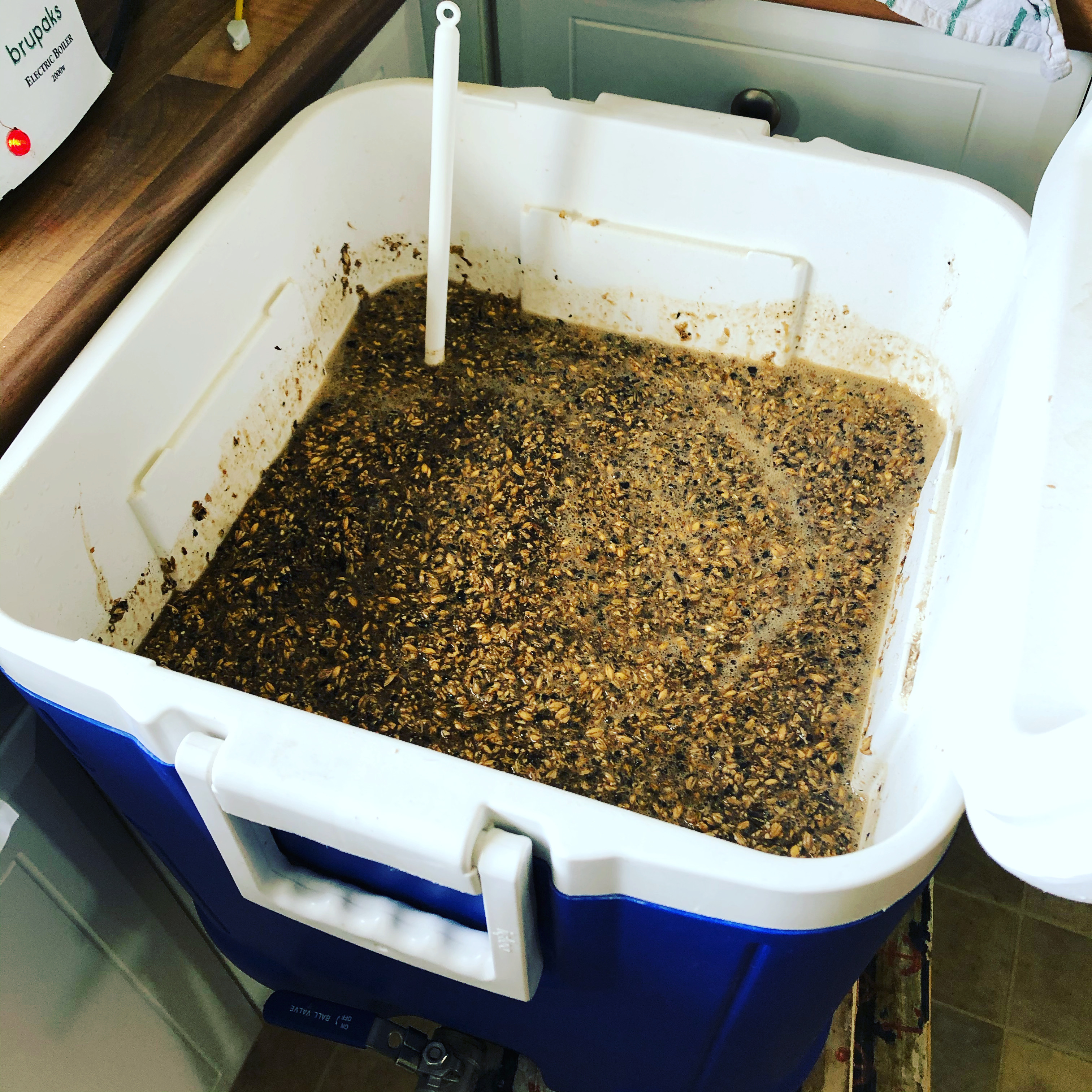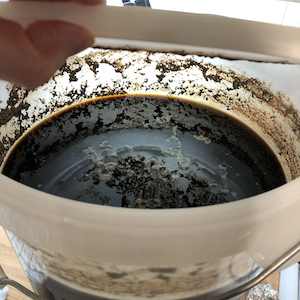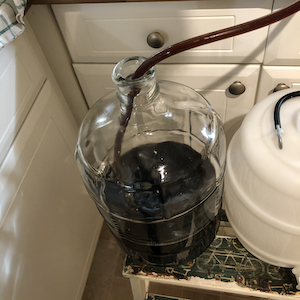Beer 2020#1 - County Porter
[caption id="attachment_9282" align="alignleft" width="300"] Mashing in[/caption]
Mashing in[/caption]
I am aiming to make one beer a month this year. I didn't make one in January but managed to make one in February. I would make a second one this month to compensate for January but I've hit a technical snag with my hot liquor tank.
I made a Porter, specifically the County Porter - a recipe designed by my beer circle, but modified slightly by yours truly. I've made this recipe a couple of times. On the first occasion, I had a boiler failure (yes, the same piece of equipment that has failed again). On the second occasion, I won 3rd prize with the beer against some veteran beermakers.
Here is the recipe:
County Porter III (to make 23l) OG 1070 FG 1022 Treat water to match the mineral profile for Stouts/Porters (e.g. AMS, DWB & Table Salt). Pale Malt 7000g Brown Malt 1500g Roasted Barley 500g East Kent Goldings 120g Start of boil (80 minutes) Protofloc 15 minutes East Kent Goldings 10g Turnoff Use Wyeast 1028 London Ale (starter recommended). Ferment at 18°
[caption id="attachment_9368" align="alignright" width="300"] Boil[/caption]
Boil[/caption]
I started the night before by setting up the water. I also prepared the water the night before. Letting it stand overnight with a dissolved Campden tablet irradicates some of the chemicals (such as chlorine) from the water. It also means that I just have to turn on the hot liquor tank in the morning and by the time it is ready I have woken up properly. I treated the water with AMS to adjust the mineral profile for the beer.
The brew day on 1st February could not have gone as perfectly, to the point that I'm wondering what I forgot to do. The water came out of the liquor tank at exactly the right temperature (74°) to meet the grain and settle at 66° for the mash. My brewing has improved significantly by using the heat formula to calculate the strike temperature. Essentially you do this: for your desired mash ratio R (which is the grain weight in kilos divided by the water volume in litres - I usually aim for 2.5), the strike temperature S is:
S = M + 0.4(M - G)/R + 1.7
where M is the target mash temperature and G is the temperature of the grain. If the grain is at room temperature, you can get away with a strike temperature of roughly 9-10° above the strike temperature. I leave nothing to chance and calculate it each time.
[caption id="attachment_9369" align="alignleft" width="300"] Making oil[/caption]
Making oil[/caption]
I bought a new mash tun last year but I haven't got around to assembling it yet. It's made it out of the box. I really must assemble it. I used my trusty old cooler box mash tun which does the job but loses heat. I mashed for about 1 hour and 30 minutes, then sparged (rinsing the grains to get all the sugar). At this point, I noticed that my hot liquor tank had given up. It had kindly heated the last batch of sparge water and then died. It looks like the element has expired.
On to the boil for 1 hour and 20 minutes. Most of the hops go in at the start for this recipe with a handful going in a turnoff. After cooling I pitched the yeast. Earlier in the morning, I made a yeast starter and pitched the yeast I activated the night before. About four hours before the pitching, this gets the yeast going ready to attack the sugars.
 The starting gravity was 1069. I fermented the beer at 18° in my fermentation fridge. It has a heat-pad in the fridge and a switching device to keep the fridge at the right temperature. It had finished a week later, but I didn't have time to deal with it until this weekend. The beer spent 2 weeks in the fermenter at 18°.
The starting gravity was 1069. I fermented the beer at 18° in my fermentation fridge. It has a heat-pad in the fridge and a switching device to keep the fridge at the right temperature. It had finished a week later, but I didn't have time to deal with it until this weekend. The beer spent 2 weeks in the fermenter at 18°.
On Saturday I racked the beer into a small carboy and a plastic barrel. I've added sugar to beer in the barrel so that it carbonates. The yeast ferments the sugar and produces CO2. It's a real live ale. The beer in the carboy will eventually be bottled and I've put this back into the fermentation fridge to condition. The final gravity was 1022 meaning this beer will be around 6.2% ABV. It may have a little further to go and the yeast will keep eating away. Porter is supposed to be left to condition before drinking.
 I need to replace the element before I can comfortably brew again. I can make do with using the boiler if necessary but it is far easier to have a separate HLT. I suspect the next brew will be in March.
I need to replace the element before I can comfortably brew again. I can make do with using the boiler if necessary but it is far easier to have a separate HLT. I suspect the next brew will be in March.
Back to the Porter, I will be drinking this in three months or so. I'll probably bottle the rest around the same time.